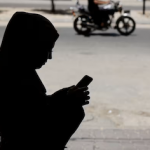Unconventional warfare like we have seen recently with Hamas’ attack on Israel is led by disinformation and a quest to dominate the narrative. These are integrated into physical operations, into asymmetric warfare, into terrorism and into information warfare. The strategy begins before hostilities start and seeks to set the agenda for leaders and their publics, their militaries and geopolitics.
The new narrative-led approach to warfare became visible in the disinformation dissemination in the days just before Russia launched its offensive against Ukraine in 2022. But the ongoing clashes between Hamas and Israel show the devastating impact of this strategy.
Hamas is adept at information warfare. It planned its attack a year in advance while giving the impression it was focused on economic stability. For example, it successfully sought additional employment permits for Gazans to work within Israel, where salaries are higher. But the notion the Islamist movement was taking a conciliatory approach to improve the livelihood of the people of Gaza was merely disinformation.
From the moment Hamas commenced its attack on Israeli towns and bases on Oct. 7, a parallel operation went forward on social media. Hamas livestreamed its onslaught and coordinated disinformation from its allies and supporters spread its messages.
Much of what went out was indeed pure fake news: edited video of mislabeled events from other places or complete fabrications. Hamas has made extensive use of Telegram, a platform with no content moderation, end-to-end encryption and message groups with more than 10,000 members.
From there, messages get reposted to X, the former Twitter, which has struggled to do much to moderate the content given the depletion of its trust and safety staff since Elon Musk’s takeover of the platform. TikTok, WhatsApp, Facebook, Instagram, YouTube, Snapchat and Instagram have also been used to spread Hamas’ messages to billions.
Videos have been doctored or created out of nothing. Footage from video games and the Syrian civil war have been posted to show purported military engagements between Israel and Hamas. Fake images show soccer star Ronaldo holding a Palestinian flag, Israeli Prime Minister Benjamin Netanyahu hospitalised and a fake White House press release on U.S. President Joe Biden granting $8 billion in aid to Israel.
Fireworks displays have been misrepresented as Hamas rockets. The fake account of a BBC correspondent shared mislabeled videos. There is no end to the fake documents, fake statistics, fake recordings and fabricated events, military operations and casualties. Propaganda groups are distorting historical records and undermining credible news reporting to try to inflame emotions.
Open-source intelligence fact-checkers and journalists have tried to counter the disinformation. But the volume is so high, and the coordinated surge across different platforms so powerful, that the disinformation has quickly achieved its goal of inflaming world opinion.
The volume is unprecedented and its spread is rapid. Often the algorithms of the platforms are making the violence and videos more visible. Those involved in this coordinated activity have reverse-engineered the platforms’ algorithms to help make the content go viral. The platforms then are incentivised to spread viral content in pursuit of advertising revenues.
The pace and sophistication of disinformation in this conflict is far higher than with the Ukraine war. The conflict is fast-moving and the many gaps in information leave room for misinformation to take root.
The global Islamic community, already predisposed to be sympathetic to the Palestinian cause, has been galvanised by the Hamas narrative which aims to garner sympathy, attract funding, and mobilise those who believe the cause is just.
What can be done?
Some countries have already merged the missions of unconventional and conventional warfare. The U.K.’s 77th Brigade is one such military unit that has been entrusted with information warfare and combating strategic disinformation on social media.
Civil society and business can support fact-checking organisations and promote ethical reporting. Governments can prioritise media literacy and pressure social media platforms to demote inauthentic coordinated accounts. They can create dedicated interdisciplinary agencies to monitor, analyse and counter disinformation campaigns and coordinate efforts.
New transparency laws requiring social media platforms to disclose details of political advertising, use of bots and coordinated influence campaigns would help.
Platforms could readily create “friction” in the user experience that could slow down the posting of potentially contentious content. For example, as with the function on X that asks whether a user reposting an article has read it, a pop up window could ask users linking to potentially suspect content, “Are you sure you want to post this?”
There are lessons here for India and other Asian countries.
For two years Hamas studied the technical workings of Israel’s Iron Dome air defense system, including the time it takes to repel short-range rockets and mortars and to calculate the path of the next one. Exploiting the results of its analysis, it has worked to overwhelm the system by firing thousands of rockets into southern and central Israel at a time.
Hamas also anticipated Israel’s aggressive response to its brutal invasions of towns around the perimeter of Gaza. The narrative it is propagating challenges Saudi Arabia’s leadership of the Islamic world and has torpedoed the three-way diplomatic dance between the U.S., Saudi Arabia and Israel.
India and other nations have to prepare for similarly coordinated attacks that seek to overwhelm their defenses. Copycats will select significant dates to strike, like the Jewish festival of Simchat Torah that Hamas capitalised on.
We have work to do to build societal resilience to manipulation, to promote responsible online behavior, to inoculate against disinformation tactics and to spur a healthy critical approach to online information.
Counterpropaganda is necessary to counter propaganda. A Chinese-style Great Firewall is not possible in a democracy like India. In a democracy, citizens owe it to themselves and to each other to take on responsibility and be on their guard.
Opinion-shaping in war is an art.
Brijesh Singh is Adjunct Distinguished Fellow, Cybersecurity Studies, Gateway House.
This article was first published in Nikkei Asia.


